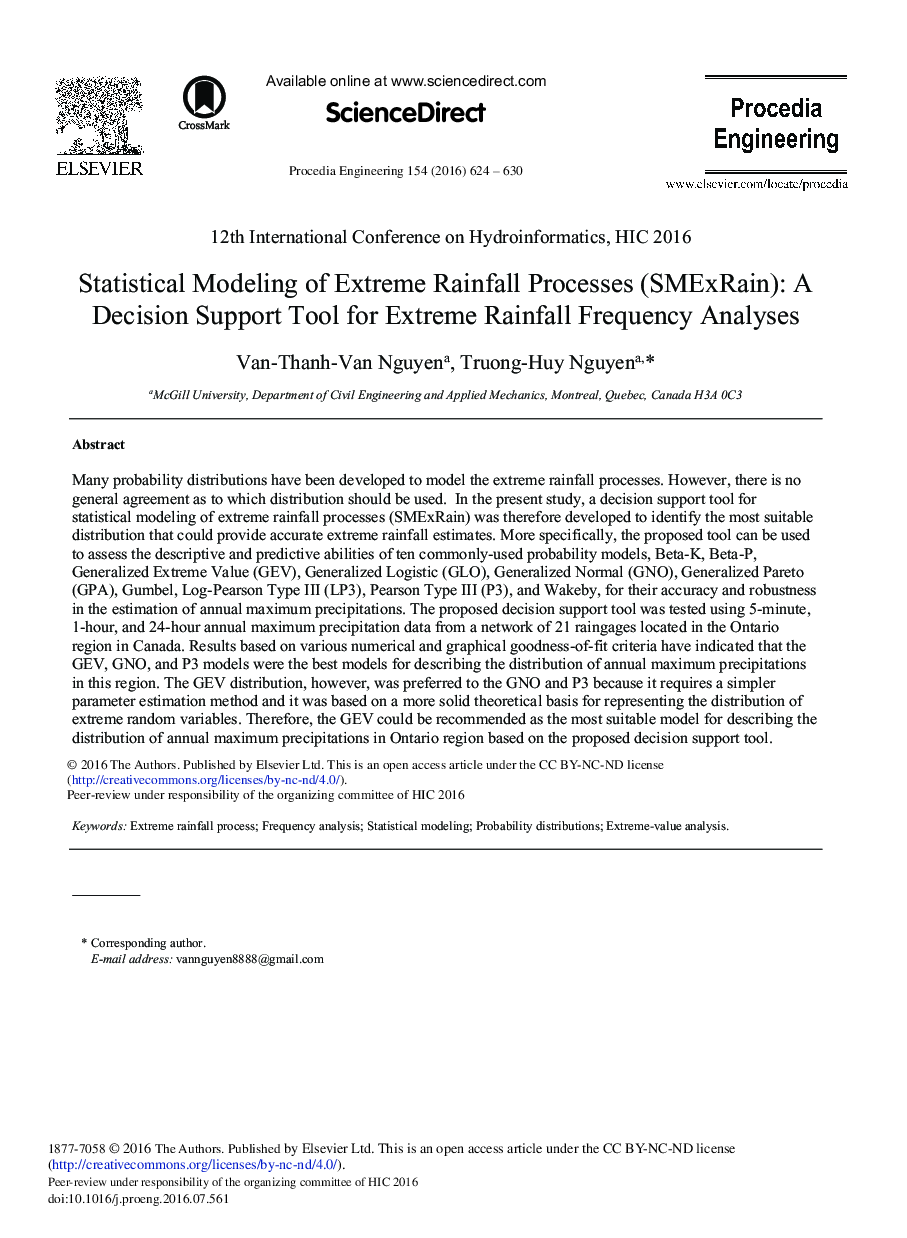| Article ID | Journal | Published Year | Pages | File Type |
|---|---|---|---|---|
| 5030509 | Procedia Engineering | 2016 | 7 Pages |
Many probability distributions have been developed to model the extreme rainfall processes. However, there is no general agreement as to which distribution should be used. In the present study, a decision support tool for statistical modeling of extreme rainfall processes (SMExRain) was therefore developed to identify the most suitable distribution that could provide accurate extreme rainfall estimates. More specifically, the proposed tool can be used to assess the descriptive and predictive abilities of ten commonly-used probability models, Beta-K, Beta-P, Generalized Extreme Value (GEV), Generalized Logistic (GLO), Generalized Normal (GNO), Generalized Pareto (GPA), Gumbel, Log-Pearson Type III (LP3), Pearson Type III (P3), and Wakeby, for their accuracy and robustness in the estimation of annual maximum precipitations. The proposed decision support tool was tested using 5-minute, 1-hour, and 24-hour annual maximum precipitation data from a network of 21 raingages located in the Ontario region in Canada. Results based on various numerical and graphical goodness-of-fit criteria have indicated that the GEV, GNO, and P3 models were the best models for describing the distribution of annual maximum precipitations in this region. The GEV distribution, however, was preferred to the GNO and P3 because it requires a simpler parameter estimation method and it was based on a more solid theoretical basis for representing the distribution of extreme random variables. Therefore, the GEV could be recommended as the most suitable model for describing the distribution of annual maximum precipitations in Ontario region based on the proposed decision support tool.
